Build a townhouse development
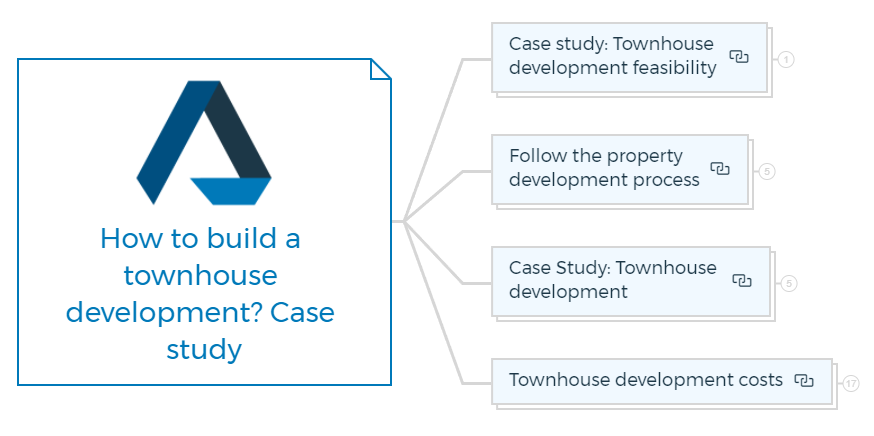
Case study: Townhouse Development Feasibility
Assumptions & feasibility study
Building a townhouse is easy, but whether or not you should build a townhouse or something else is a matter of your investment strategy & market research.
If you're a property developer or real estate investor, then you know that townhouses are all the rage right now. A townhouse development can be a great investment, specially if you follow the develop and hold strategy.
They offer an excellent return on investment without considerable risks, and they're perfect for small & medium size families who want to live in a vibrant community.

But how do you go about building a townhouse development?
This blog post will walk you through the feasibility of townhouse development and you will explore a case study to see how it's done. So if you're thinking of embarking on a townhouse development project, read on!
Follow the property development process

Step 1 - Get clarity - Start with why?
- Why do you wish to do a townhouse development? Is the purpose property investment?
- Do you plan to Develop & Sell, or is the plan to create a portfolio of investment properties via property development?
- Do you plan to Develop & Hold your investment properties?
For many people, building a real estate portfolio is a way to build up their wealth to retire with a steady income and be financially secure. Investing in real estate and building a portfolio is a long-term endeavour.
Units, Villas & Townhouses
Three pillars of any residential property development project
Townhouses and villas have distinct personalities & usually do not have lifts. Standard features are expansive balconies, decks, tiny gardens, and dividing walls. These are ideal for communal living, theme housing developments, vacation resorts and retirement villages.
They are classified as 'Grouped Dwellings' aka Multifamily, divided into townhouses, villas, and retirement villages. A group dwelling is typically one of two or more homes built simultaneously, each with its private garden area.
What are Residential Units?
Unit in real estate is a generic term for high-density residential projects, such as townhouses or apartment complexes, including duplexes, triplexes and quadruplexes.
What is a Villa?
Villas are independent units in a complex of five or more residences designed with a specific theme and given their name. These houses can have one or two stories, usually self-contained (i.e., no shared wall between them), and have their front and back yards.
Townhouses definition
Townhouses are homes typically found closer to city centres and built in more densely populated locations. They are usually two stories tall, have shared walls, and have a parking garage. Each unit will have access to a private garden on the ground level.
Like the terraced housing popular in Sydney between the 1850s and 1890s, the Paddington-style development is an excellent example of townhouses in Australia.
As suburban densities rise, developers build townhouses in larger complexes with security fencing and resort amenities such as swimming pools, gyms, and playground equipment.
Don't let the real estate challenges stop you from achieving your goals! Sign up for my property development starter pack that reveals all the secrets of mastering property development.
Step 2 - Do your market research
Market research is an important component of a successful property development project. Becoming an astute property developer requires understanding the property development process, but you can also time the real estate market. Check out some of our articles on market research and property market cycles.
Step 3 - Property development site selection
Selecting a development site requires stringent property development due diligence, which includes conducting a detailed property development feasibility study. Due diligence deals with issues related to your shortlisted development site.
In particular, it deals with zoning, site layout, neighbourhood character, local council, legal issues related to the development site etc. Property developers must be able to identify these site-specific issues as they all add to the project's total development costs.
Once you have completed your development projects due diligence, you can proceed to the next feasibility studies phase.
Case study: Townhouse development
So here is a property development case study of a potential townhouse development project. And here is how I would approach the proposed development. Oh well, not a proposed development yet, but that's exactly how you will come across a potential development site.

Step 4 - First look - Vetting the site
Assumptions
- You are an active property developer and always looking for lucrative development projects.
- You know the area and the real estate agents & many property developers who operate there.
A real estate agent you work with regular calls and gives you 2 pieces of information:
- The development projects' address.
- And the asking price of $2,100,000 for the land (development site).

The site is in an already established suburb within a 20km radius of the CBD (central business district). Average house prices for new 3 bedroom townhouses in the area range from $870,000-$960,000.
All infill sites are getting snapped up and redeveloped into townhouses or apartments. The site is near schools, public transport and amenities.
Step 5 - Preliminary feasibility study - townhouses
We do not have enough information to carry out a detailed feasibility study. However, looking at the neighbourhood character, the adjoining property, for a preliminary feasibility study, it is safe to assume that you can get development approval for 6 x 3 bedroom townhouses on this 980m2 lot.
Before engaging consultants to do a concept design and adding to our total development costs, property developers must do a quick feaso to determine if the project is financially viable and whether it is worth spending more time and money on this site.
So using our One Minute Feaso - which allows you to do development feasibility in under one minute, based on quick assumptions and cost averages, let us determine the viability of this townhouse development.
Feasibility Preferences
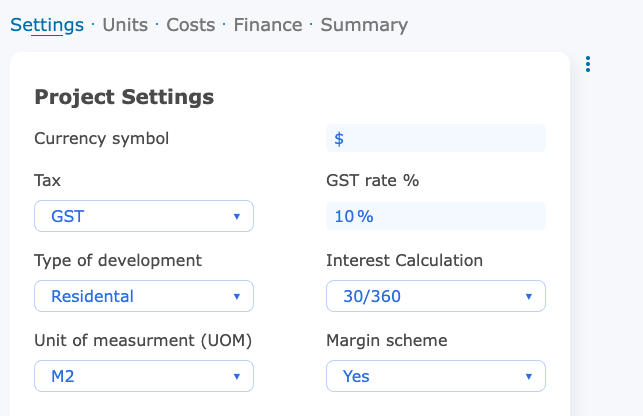
Select the interest calculation method. 30/360 assumes that for interest calculation purposes, there are 30 days in a month and 360 days in a year.
One Minute Feasibility study also allows you to select 30/365 i.e. it assumes that each month has 30 days and the year has 365 days.
GST & Margin scheme calculations for a property development project

If this project goes ahead, I will be claiming the margin scheme, and therefore it is important to select the margin scheme in One Minute Feaso. If you are unsure if the margin scheme applies to you, please check out ATO's article here.
🇺🇸 USA clients select "NA" instead of GST, and all calculations occur without any tax implications.
If you are from 🇦🇺 Australia, 🇳🇿 New Zealand, 🇨🇦 Canada, the 🇬🇧 UK, 🇿🇦 South Africa or anywhere GST and VAT are paid on sales and claimed on costs, you need to select the GST option and enter the GST Rate % applicable in your country.
Formula for GST & Margin Scheme Calculations
All my 🇦🇺 Aussie mates, please check with your accountant and refer to GST & Margin Scheme for more details. For calculation purposes, all our feasibility study applications strip out GST from sales and expenses and all calculations are done net of GST.
Formula to calculate GST liability under the margin scheme for property development projects.
(Sales - Land costs)/11
Townhouses & units to develop
We don't have a development approval and we haven't yet started the town planning process, however, as explained earlier, looking at the site next door and with a precedent of 6 townhouses on a similar size lot, I believe that this site should be able to get a planning approval for 6 townhouses.
IMPORTANT - at this stage, all we wish to determine is whether or not this project is financially viable and does it have any potential profits. Time is money, and property developers need to be smart about picking their battles and selecting the path of least resistance.
It is not financially viable to spend money on due diligence for every site that you come across.

In our feasibility analysis, we will assume that we are developing 6 townhouses, with a total built area of approximately 145m2 each and based on our market research, will sell each townhouse for $950,000 (average) each.
Our assumptions are based on:
- Listed FOR SALE & SOLD prices on real estate portals online for comparable townhouses in the same suburb and surrounding suburbs.
- Knowing a few real estate agents in the area, we have spoken to three local agents about current selling prices, stock levels, potential rents for similar townhouses etc.
Get The Edge Now!
Discover the transformative power of our FREE EDGE platform and
unlock a world of opportunities at no cost!
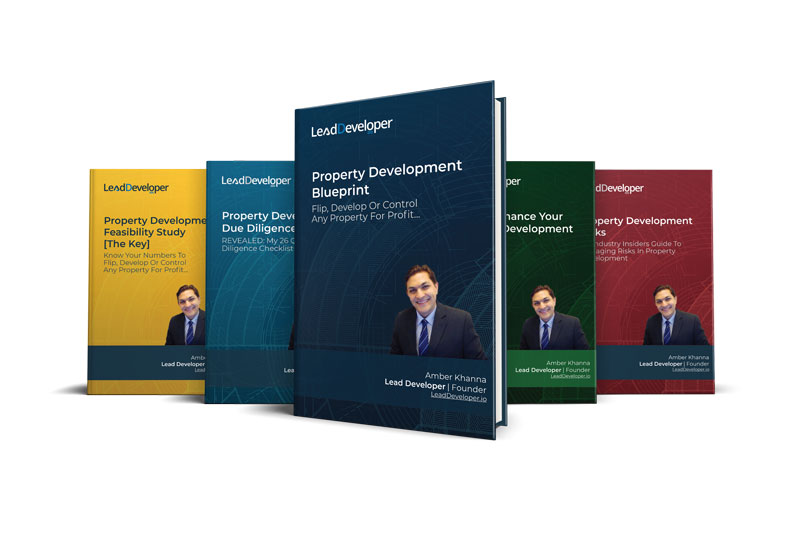
Your Real Estate Toolkit Awaits!
Free eBooks, Courses & Feasibility Suite Trial—Join Today!
✓ Unlimited FREE Trial: Experience the full power of our Feasibility Suite with hands-on demos
—explore without limits, no time pressure & without commitment or credit card!
✓ Learn from Success: Dive into real-life case studies for practical insights.
✓ Engage, Inquire, and Innovate: Ask questions, request features, and engage in lively discussions.
✓ Showcase Your Projects and Gain Insights: Share your projects and get personalised feedback.
✓ Free Resources Galore: Access a treasure trove of free resources,
eBooks & courses to keep you informed.
✓ Exclusive Training: Enjoy members-only training to sharpen your skills.
Townhouse development costs
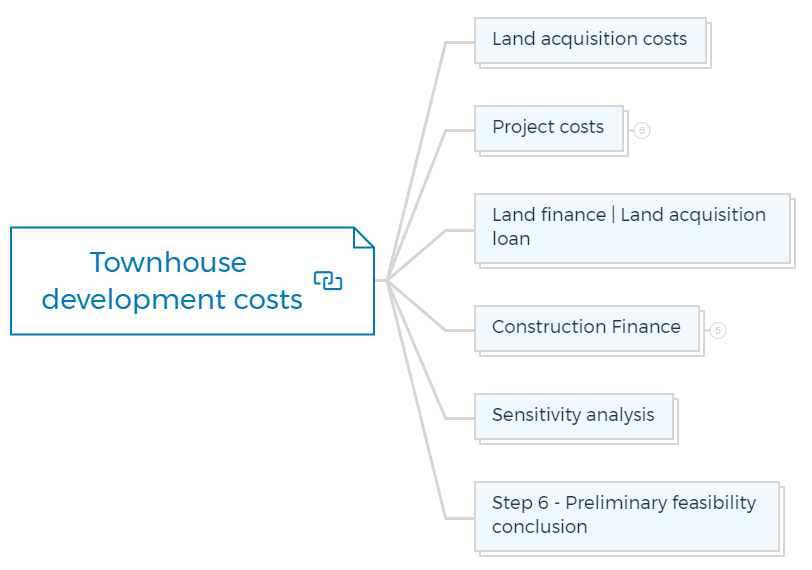
Land acquisition costs

Land Costs are the same as the asking price, and if you agree, it will also be your purchase price. Stamp Duty is an ad valorem tax, similar to transfer taxes and calculated as a % of land value.
Closing costs include legal costs and conveyancing fees, and you can allow for them as a percentage of % of land value.
Project costs
Townhouse development costs include 7 main categories:
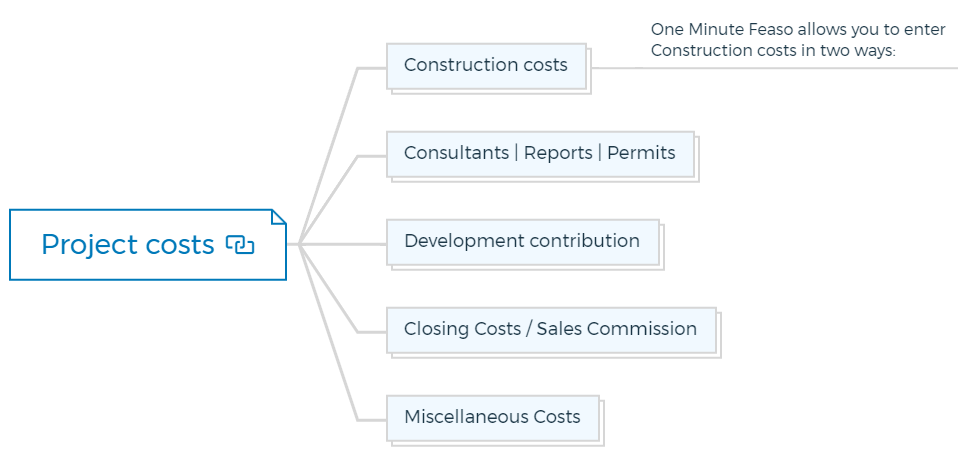
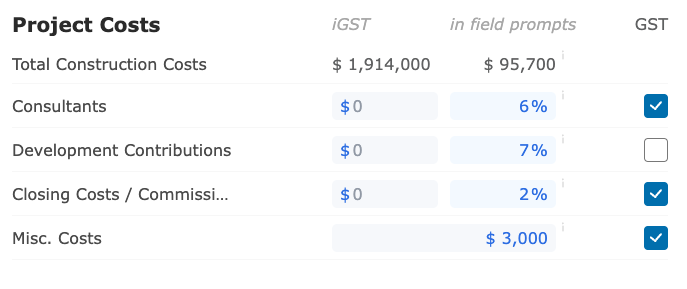
Construction Costs
Construction costs are a major component of total development costs. Apart from pure construction costs, i.e. the contract sum you get from a construction company, they also include site works, utility connection fees, and a provision for cost overruns or contingencies.
Depending on your financial institution (lender), these hard costs may sometimes include soft costs related to working drawings, professional reports, and building permit fees.
One Minute Feaso allows you to enter Construction costs in two ways:
- You can either enter the total built area based on your townhouse design; like our example, we assume that each townhouse's average built area will be 145m2.
- Or you can enter an average construction cost total to allow for construction costs.
Consultants | Reports | Permits
For consultants, based on the successful outcome of my past completed project(s) / developments, I follow a thumb rule at this stage, i.e. when I do not have the complete information.
If there is no (DA) Development Approval or a town planning permit, I allow 4%-6% of the construction cost for consultants, reports and permits.
If there is a DA in place, I allow between 3%-4% for working drawings, including application fees and build permit fees.
This amount is lower because when a town planning permit is in place, the initial costs for feature survey, re-establishment/identification survey, endorsement etc., have already been incurred.
Development Contribution
Council contributions, developer fees, development fees, development contribution, open space levy etc., are all the same fees.
These charges are imposed by councils or counties because where there used to be a single dwelling connected to council infrastructure, i.e. stormwater, sewer etc., there are now going to be many. Hence the reason councils charge these infrastructure upgrades or maintenance fees to the developer.
Developer fees or development contribution is calculated differently from council to council. You might be in the same city, same state, but the method to calculate these fees will vary from one (LGA) Local Government Area to another.
In Melbourne, most councils charge 4%-7% of what they assess the land value. Councils can be tricky in the way they assess this value. In most cases, their land value is what they show on council rates notice, but they can very easily switch to a current sale value for this assessment.
I have been caught out for one of my developments dealing with the same council, who referred to the "rates-value" for one development and then switched to a "recent sale value" for my next development.
So it is best to call the local authority and find out the exact method of calculating the developer infrastructure charges and their method of assessing land value if their calculation involves land value assessment.
Closing costs / sales commission
Allow a percentage of total revenue for sales commission & closing costs.
Miscellaneous costs
In One Minute Feaso, Project costs like legal, marketing, permit fees etc., can be allowed as a $ amount per unit.
Land finance | Land acquisition loan

If there is any lag between when you first acquire land & commence construction, you can account for the interest during this holding period. Even if you have just one construction loan, chances are that if you are required to organise off-the-plan pre-sales, your facility will be split between construction debt and land debt.
One Minute Feaso allows you to split this component and have a separate land finance facility run independently to capture the interest costs separately.
Construction finance


Total construction debt
You can account for total construction debt as a percentage of Total Project Costs or Total Sales.
Loan setup fee
The loan fee is always accounted for as a percentage of the total borrowed amount, aka total debt.
Loan draw
The Loan Draw percentage signifies the intensity at which your construction loan will be drawn down. In construction, you cannot draw down the entire amount on day one.
And because construction interest is calculated based on the amount that has been dispensed or drawn down, this option allows you to set a rate at which your loan will be drawn down.
Loan duration
For construction loan duration, I always allow the total number of months + another 3 months for settlement of Off-the-plan pre-sales. So if my construction took 12 months to complete, I would allow 12+3 = 15 months to account for construction interest.
Interest rate
The construction interest rate is a simple interest rate you account to be charged on the drawn down amount.
Sensitivity analysis
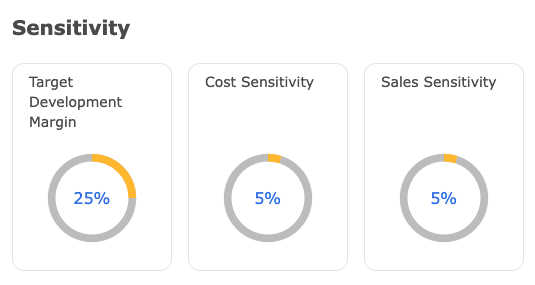
Probably the best feature of One Minute Feaso; in fact, we have built this feature into all our feasibility applications.
One Minute Feaso allows me to determine the maximum price we should pay for the land-based on the total project costs and what I can build on the site.
It allows me to enter a hurdle rate, i.e. a minimum rate of return or a target development margin on costs, to arrive at the maximum land value, aka residual value of the land.
This way, we can be sure that we are not paying more for the land than its worth based on its development potential.
I have entered 25% as the hurdle rate for our case study.
One Minute Feaso also allows me to quickly see how this project will fare if the Sales & Costs assumptions in the feasibility moved up or down in % increments and decrements.
So for Sensitivity Analysis, I wish to see what the profit and profit margin would look like if the value & costs of my sales assumptions were to go up or down by 5%.
I always like to see what the worst-case scenario would look like, so I can avoid, mitigate or contain development risks.
Step 6 - Preliminary feasibility conclusion
Based on our initial assessment & our assumptions, One Minute Feaso tells us the following about the site.
Results
- Development Margin (Profit Margin) on cost is 15.6%
- The total development profit for the project is $723,615
- Developer's equity contribution will be $1,394,733
- Importantly, if I wish to make a 25% Development Margin On Cost, I should pay no more than approximately $1,749,069 for land, instead of the asking price of $2,100,000
- My worst-case scenario will incur a loss of -$278,568. It accounts for a drop in Sale Values by 10% and an increase in my total development costs by 10%
- Checkout the published feasibility report & ccroll below to find out what these results mean.

Get The Edge Now!
Discover the transformative power of our FREE EDGE platform and
unlock a world of opportunities at no cost!
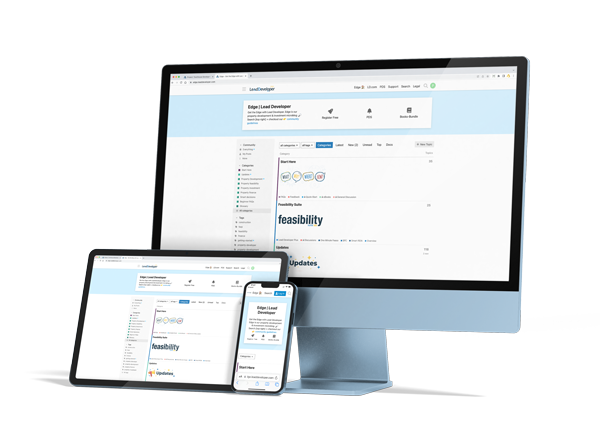
Your Real Estate Toolkit Awaits!
Free eBooks, Courses & Feasibility Suite Trial—Join Today!
✓ Unlimited FREE Trial: Experience the full power of our Feasibility Suite with hands-on demos
—explore without limits, no time pressure & without commitment or credit card!
✓ Learn from Success: Dive into real-life case studies for practical insights.
✓ Engage, Inquire, and Innovate: Ask questions, request features, and engage in lively discussions.
✓ Showcase Your Projects and Gain Insights: Share your projects and get personalised feedback.
✓ Free Resources Galore: Access a treasure trove of free resources,
eBooks & courses to keep you informed.
✓ Exclusive Training: Enjoy members-only training to sharpen your skills.
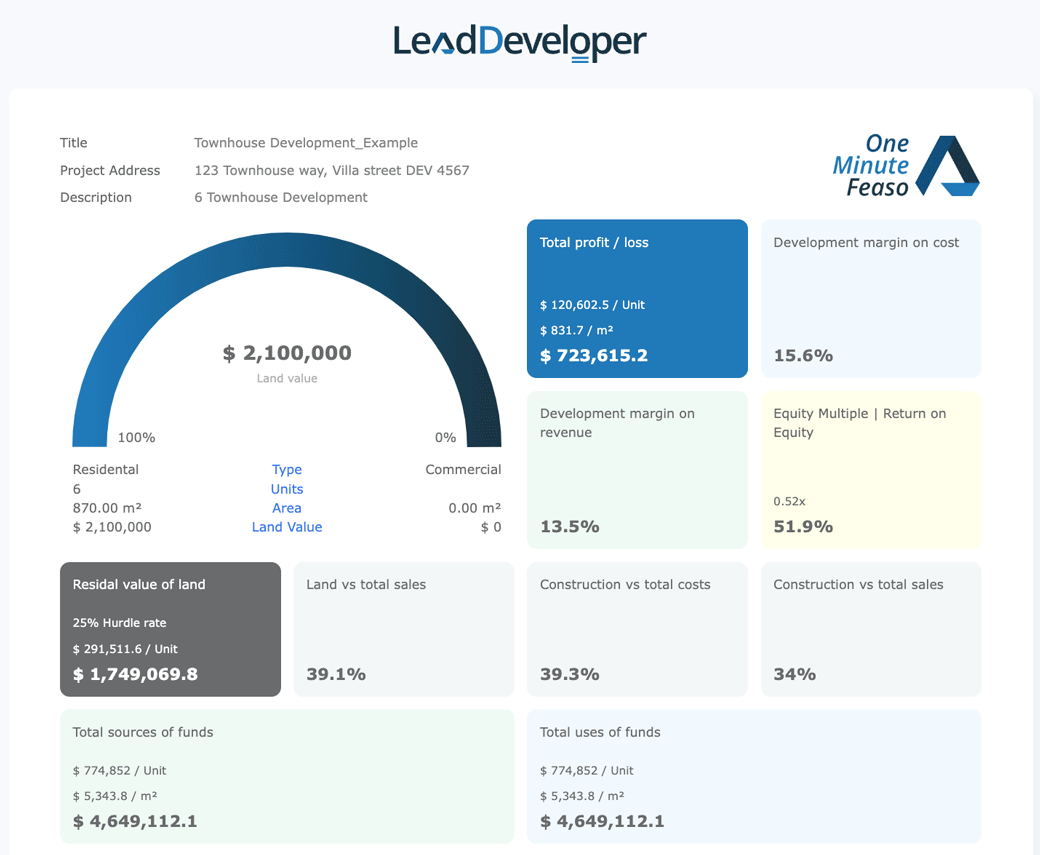


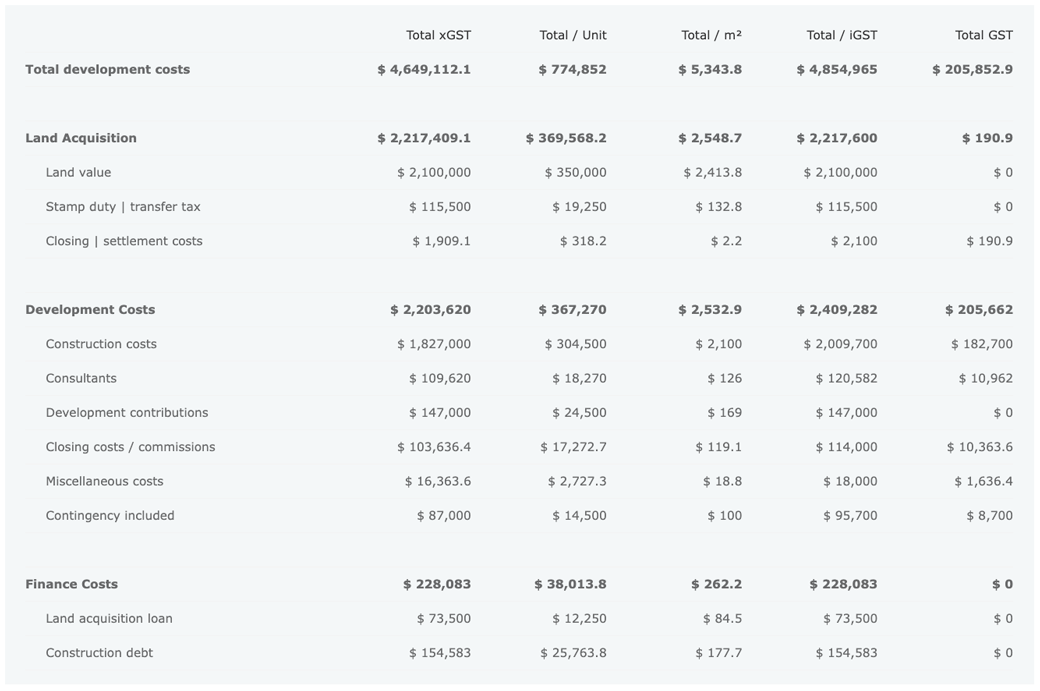

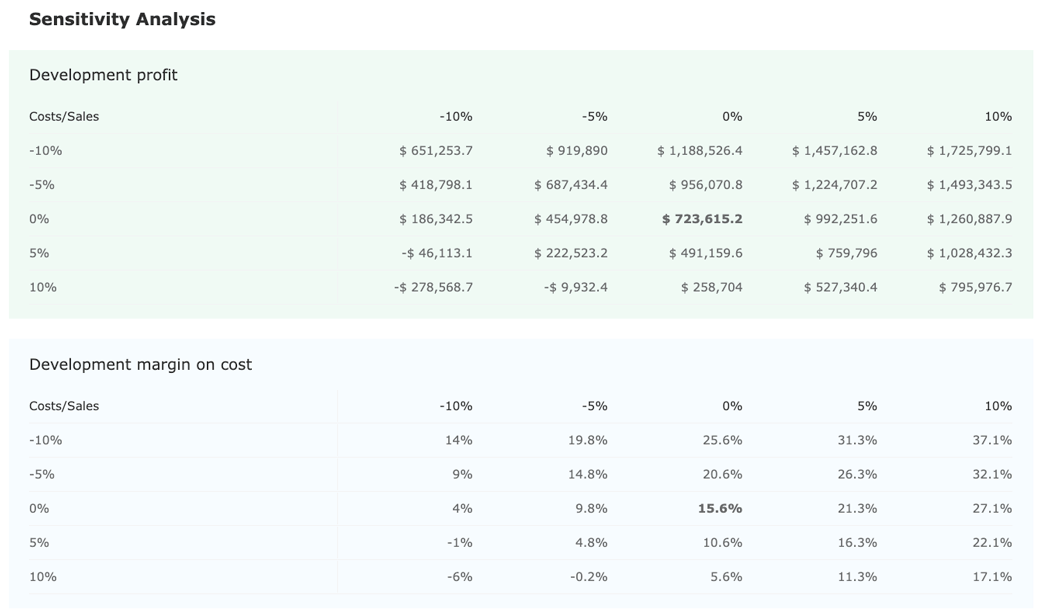
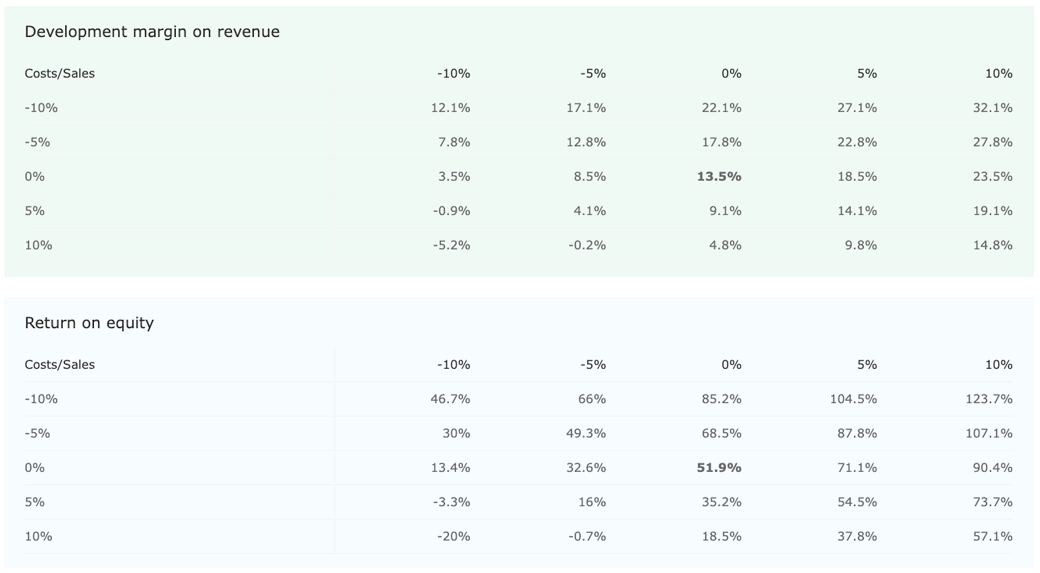
What does it mean for our townhouse development?
- Development Margin (Profit Margin) on cost is 15.6%
- The total development profit for the project is $723,615
- Developer's equity contribution will be $1,394,733
The profit margin of 15.6% on cost and a return on equity of around 51% on my investment of $1,394,733 is very low for this project, especially if you consider the $3.2m debt required to complete this project.
On paper, return on equity looks attractive as I only have to invest $1.3m to make $723,615K in about 27 months.
- To make a 25% Development Margin On Cost, I should pay no more than approx. $1,749,069 for land purchase.
We need to sharpen our assumptions in our feasibility further. $1,780,320 of residual land value is way lower than the asking price of $2,100,000. Usually, unless the seller is delusional, the asking price is over $300k more than our residual land valuation.
This indicates that I have been very liberal in making assumptions about this site. So there must be something that the seller knows or is confident of to warrant $2,100,000.
Don't get me wrong, the seller is likely inflating the price, but in property development, assume nothing, question everything and find facts and figures to support your decisions.
- My worst-case scenario makes a loss of -$278,568. It accounts for a drop in Sale Values by 10% and an increase in my total development costs by 10%
I may have been liberal in my assumptions & heavy handed with my sensitivity analysis. I may have built fat into my feasibility, but when my assumed costs rise by 10% and my assumed Sales drop by 10%, only then the project makes a loss of $278,568k, which is the worst case scenario based on my assumptions.
In no way this is a complete project feasibility; however, it does give me the confidence to move ahead with the project and investigate it further and sharpen and fine tune my assumptions.
So in the next round, we will see what else we can do to improve the bottom line.
FAQs

